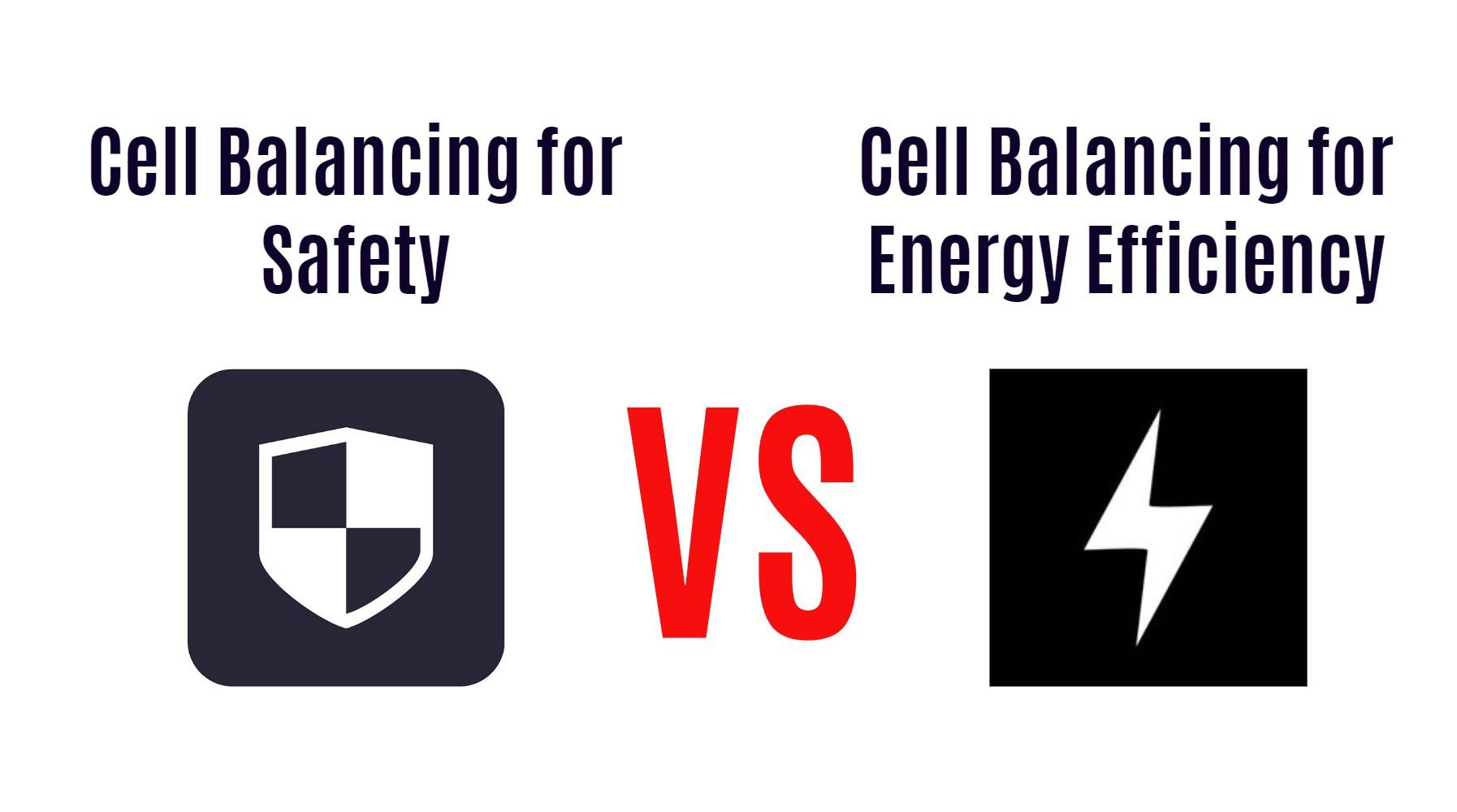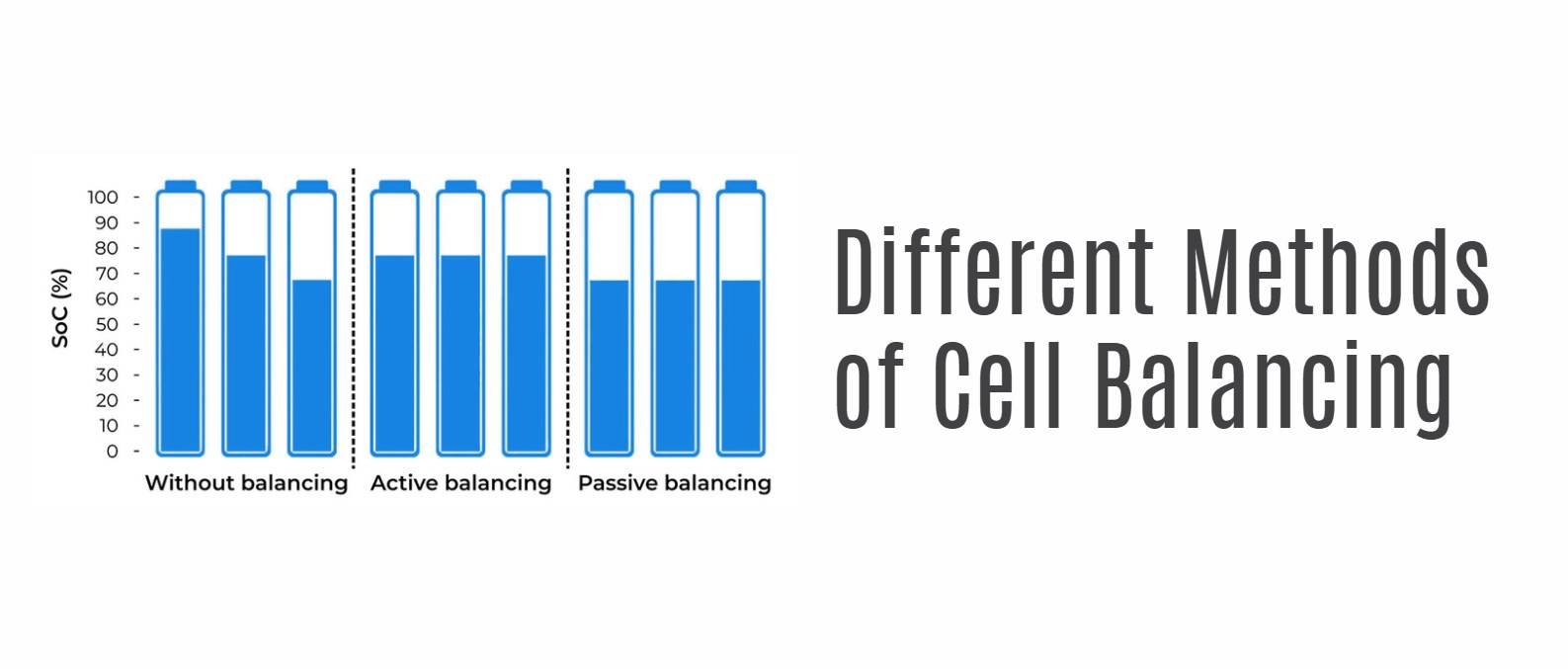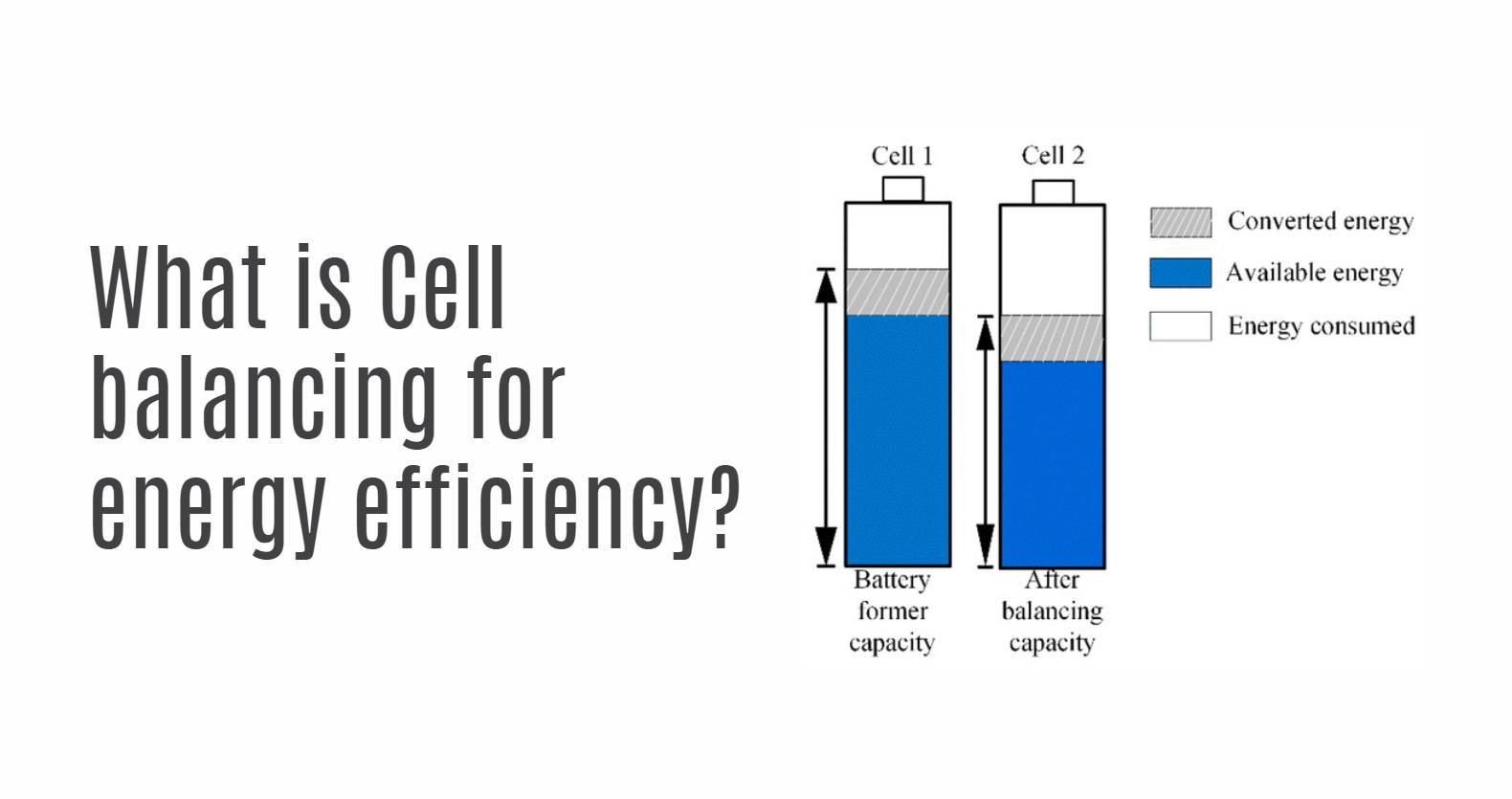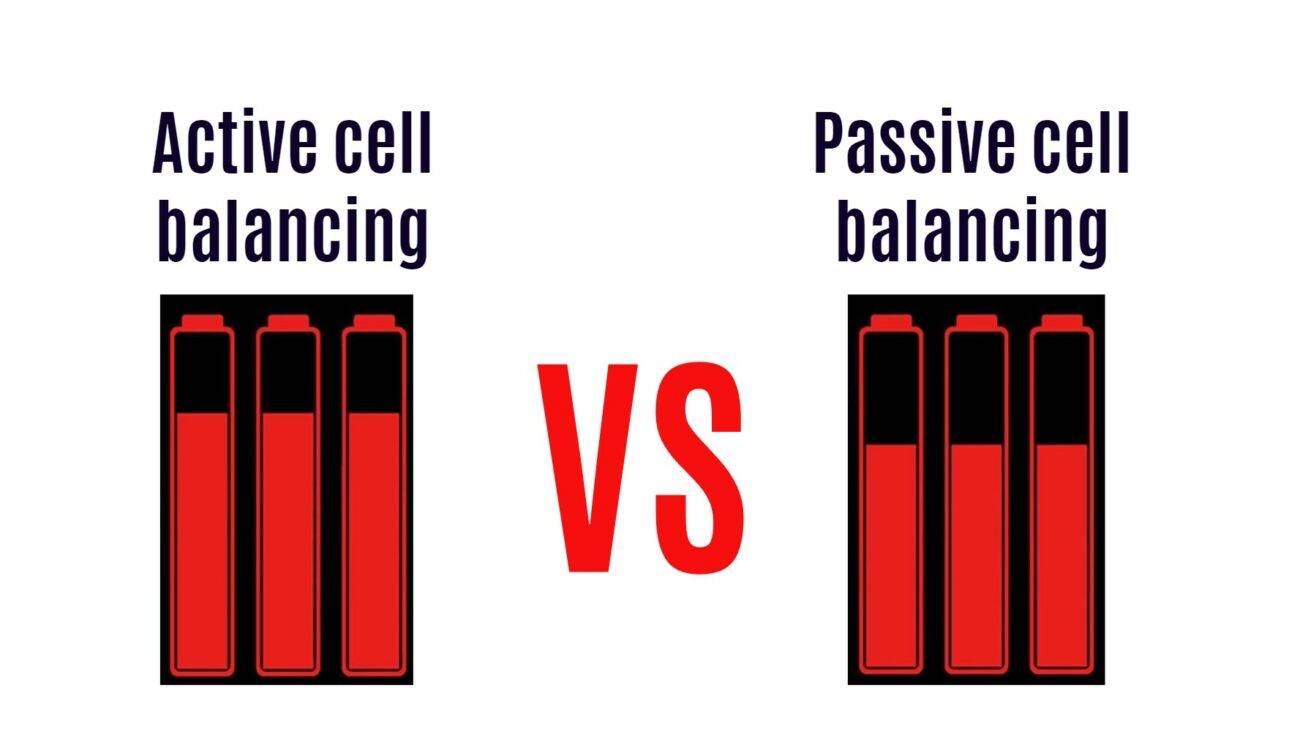Discover the intricate balance between safety and energy efficiency in Battery Management Systems (BMS) through cell balancing. Explore the importance of cell balancing for optimizing battery performance and extending its lifespan. Delve into the advantages and disadvantages of safety-focused cell balancing and energy efficiency-focused cell balancing. Gain insights into the different methods and considerations when designing BMS for various applications. Let’s dive into the world of cell balancing and unlock the secrets to maximizing both safety and energy efficiency in battery technology!
The Importance of Cell Balancing in Battery Technology
Cell balancing is a critical function in battery technology that ensures the efficient and safe operation of battery packs. By equalizing the state of charge (SOC) of individual cells within the pack, cell balancing maximizes the usable capacity of the battery pack. This enables optimal performance and longevity, allowing for the full utilization of battery capacity in applications such as electric vehicles or renewable energy storage systems.
In the world of battery technology, cell balancing is a critical aspect that often goes unnoticed by the average consumer. Essentially, cell balancing ensures that all individual cells within a battery pack are charged and discharged evenly. This process helps to extend the overall lifespan of the battery and improve its performance over time.
Without proper cell balancing, certain cells in a battery pack can become overcharged or undercharged, leading to issues such as reduced capacity, decreased efficiency, and even safety hazards like overheating or potential fires. By actively monitoring and managing each cell’s voltage levels, cell balancing helps to maintain optimal conditions for all cells to operate harmoniously together.
Understanding the importance of cell balancing in battery technology is key to ensuring longevity, reliability, and safety when using rechargeable batteries in various applications ranging from smartphones to electric vehicles.
Safety vs. Energy Efficiency in Battery BMS: What’s the Difference?
In Battery Management Systems (BMS), safety-focused cell balancing aims to protect the battery pack by ensuring that all cells operate within safe limits. This prevents overcharging, over-discharging, and thermal issues. Energy efficiency-focused cell balancing, on the other hand, aims to maximize the energy output and utilization of the battery pack by equalizing the state of charge (SOC) of individual cells. This optimizes the pack’s capacity and extends its runtime, enhancing overall energy efficiency. Both safety and energy efficiency are important considerations in BMS design, striking a balance between protection and performance.
When it comes to Battery Management Systems (BMS), the debate between prioritizing safety and energy efficiency is a crucial one. Safety-focused cell balancing aims to ensure that each cell in the battery pack operates within safe limits, reducing the risk of overheating or short-circuiting. On the other hand, energy efficiency-focused cell balancing focuses on maximizing the overall performance and longevity of the battery by ensuring that all cells are utilized optimally.
While safety-focused cell balancing provides peace of mind for users, it may come at the expense of slightly reduced energy efficiency. Conversely, energy efficiency-focused cell balancing can enhance the overall performance but may pose potential risks if not properly monitored. Striking a balance between safety and energy efficiency is key to designing an effective BMS that meets both requirements adequately.
Different Methods of Cell Balancing
Cell balancing is a critical process in battery technology that ensures the equalization of cell voltages and prevents overcharging or over-discharging of individual cells. Various methods are employed to achieve cell balancing, often involving the bypassing of specific cells during charge or discharge cycles. These techniques aim to maintain safe and optimal voltage ranges for each cell within the battery pack, ensuring efficient and reliable battery performance.
When it comes to managing the cells in a battery system, there are various methods of cell balancing that play a crucial role. One common technique is passive cell balancing, where excess energy from higher voltage cells is dissipated as heat through resistors. Another method is active cell balancing, which involves transferring charge between cells to equalize their state of charge.
Moreover, there’s also top-balancing and bottom-balancing strategies. Top-balancing focuses on ensuring all cells reach full capacity simultaneously, while bottom-balancing aims to prevent any cell from over-discharging by equalizing voltages at the lower end of the spectrum.
Furthermore, some advanced systems use intelligent algorithms for dynamic cell balancing based on real-time data monitoring and analysis. These methods help enhance overall battery performance and longevity by maintaining optimal cell health and efficiency levels.
What is Cell balancing for safety?
Safety-focused cell balancing offers several advantages. It allows for the efficient utilization of all the energy stored in a battery pack, ensuring that no cell is left underutilized. Additionally, safety-focused cell balancing reduces wear and degradation on the battery pack, contributing to its longevity and maximizing its lifespan.
Cell balancing for safety involves equalizing the charge levels among individual cells in a battery pack. By ensuring that all cells operate at similar charge levels, cell balancing enhances the overall performance and capacity of the battery pack. This improves efficiency and extends operational times, allowing for optimal utilization of the battery’s energy.
Cell balancing for safety is a crucial aspect of Battery Management Systems (BMS) that focuses on ensuring the cells within a battery pack are all operating within safe limits. This process involves monitoring and equalizing the voltage and state of charge across all individual cells to prevent overcharging or over-discharging, which can lead to potential safety hazards such as fires or explosions. By maintaining balance among the cells, cell balancing for safety helps extend the lifespan of the battery and enhances overall system reliability.
One common method used in cell balancing for safety is passive balancing, where excess energy from fully charged cells is dissipated as heat through resistors. Another approach is active balancing, which redistributes energy between cells using external circuitry. These methods help mitigate risks associated with uneven cell voltages and capacity variations within a battery pack.
In essence, cell balancing for safety plays a critical role in safeguarding both the battery itself and its surrounding environment from potential dangers posed by imbalanced cells.
Advantages of Safety-focused Cell Balancing
One potential disadvantage of safety-focused cell balancing is the possibility of incomplete charging of battery packs. This emphasis on preventing overcharging may result in a tradeoff where the battery pack may not reach its full capacity. It is important to strike a balance between safety and maximizing the usable capacity of the battery pack to ensure optimal performance and runtime.
When it comes to safety-focused cell balancing in battery management systems (BMS), there are several key advantages that cannot be overlooked.
One significant advantage is the ability to prevent overcharging and undercharging of individual cells, which helps prolong the overall lifespan of the battery pack. By ensuring all cells are balanced, the risk of overheating and potential thermal runaway is greatly reduced, enhancing the safety of the system.
Additionally, safety-focused cell balancing can improve overall reliability by maintaining consistent performance across all cells. This leads to a more stable power output and reduces the likelihood of unexpected failures or malfunctions.
Moreover, by prioritizing safety in cell balancing strategies, users can have peace of mind knowing that their battery system is operating within optimal parameters at all times. This not only protects against potential hazards but also promotes long-term efficiency and functionality.
Disadvantages of Safety-focused Cell Balancing
One potential disadvantage of safety-focused cell balancing is the possibility of incomplete charging of battery packs. While prioritizing safety, this approach may result in a trade-off where the battery pack does not reach its full capacity. It is important to strike a balance between safety considerations and maximizing the usable capacity of the battery pack to ensure optimal performance and runtime.
When it comes to safety-focused cell balancing in battery management systems, there are a few drawbacks that need to be considered. One of the main disadvantages is that prioritizing safety over energy efficiency can lead to reduced overall battery performance. This means that the battery may not reach its full potential in terms of power output and longevity.
Another downside is that safety-focused cell balancing methods often require more complex circuitry and components, which can increase costs. Additionally, these methods may result in slower charging times due to the conservative approach taken to prevent any risks of overcharging or overheating.
Moreover, focusing solely on safety could limit the overall capacity utilization of the battery cells, leading to wasted energy storage potential. This inefficiency could be a drawback for applications where maximizing energy efficiency is crucial for optimal performance.
In essence, while safety-focused cell balancing is essential for preventing hazardous situations, it’s important to strike a balance with energy efficiency considerations for optimal battery performance.
What is Cell balancing for energy efficiency?
Cell balancing for energy efficiency is a crucial aspect of Battery Management Systems (BMS) that aims to optimize the performance and longevity of battery packs. This technique ensures that each cell within the battery operates at its maximum capacity, allowing for better overall efficiency. By equalizing the charge levels of all cells, energy efficiency-focused cell balancing prevents overcharging or undercharging, which can lead to reduced battery life.
One common method used in energy efficiency-focused cell balancing is active balancing, where excess charge from higher voltage cells is transferred to lower voltage cells. This process helps maintain uniformity among all cells and maximizes the usable capacity of the battery pack. Another approach includes passive balancing through resistors or capacitors to dissipate excess energy from fully charged cells.
Cell balancing for energy efficiency plays a key role in enhancing the performance and reliability of batteries in various applications such as electric vehicles, renewable energy systems, and portable electronics.
Advantages of Energy Efficiency-focused Cell Balancing
When it comes to energy efficiency-focused cell balancing in Battery Management Systems (BMS), the advantages are clear. By prioritizing energy efficiency, battery performance is optimized, leading to longer-lasting and more reliable power sources.
One key advantage is the ability to extend the overall lifespan of the battery pack. With balanced cells, each one works harmoniously with others, reducing strain on individual cells and preventing premature degradation.
Moreover, an energy-efficient approach ensures that the battery operates at its peak capacity for a longer period. This means consistent performance over time without experiencing significant drops in power output or storage capabilities.
Additionally, focusing on energy efficiency can result in cost savings in the long run. By maximizing the use of available energy within each cell, less waste occurs during charging and discharging cycles. This not only benefits users financially but also contributes to a more sustainable energy ecosystem overall.
Disadvantages of Energy Efficiency-focused Cell Balancing
When it comes to energy efficiency-focused cell balancing in Battery Management Systems (BMS), there are some drawbacks to consider. One of the main disadvantages is that prioritizing energy efficiency over safety can lead to potential risks. By focusing solely on maximizing energy output, there’s a chance that the cells may not be properly balanced, leading to uneven charging and discharging.
Another downside is that energy efficiency-focused cell balancing methods may require more complex algorithms and components, which can increase the overall cost of implementation. This added complexity could also make maintenance and troubleshooting more challenging for users or technicians.
Moreover, by solely concentrating on energy efficiency, there might be a compromise in terms of battery longevity. Over time, unbalanced cells could deteriorate faster, reducing the overall lifespan of the battery pack.
In conclusion…
Cell balancing for safety vs. Cell balancing for energy efficiency
Cell balancing for safety focuses on preventing overcharging or over-discharging of battery cells, prioritizing battery safety. In contrast, cell balancing for energy efficiency aims to optimize the overall energy output and utilization of the battery pack. These approaches strike a balance between safety considerations and maximizing the battery’s energy efficiency, ensuring both reliable operation and optimal performance.
When it comes to cell balancing in Battery Management Systems (BMS), the choice between focusing on safety or energy efficiency depends on the specific requirements of the battery application. Safety-focused cell balancing prioritizes preventing overcharging and overheating, crucial for applications where safety is paramount. On the other hand, energy efficiency-focused cell balancing aims to maximize the usable capacity of a battery pack, ideal for applications where maximizing runtime is essential.
Whether you opt for safety or energy efficiency as your primary concern in cell balancing, striking a balance between both aspects can lead to an optimized BMS that ensures not only safe operation but also improved performance and longevity of battery packs. By understanding the different methods and advantages/disadvantages associated with each approach, manufacturers and engineers can make informed decisions when designing Battery Management Systems for various applications.











